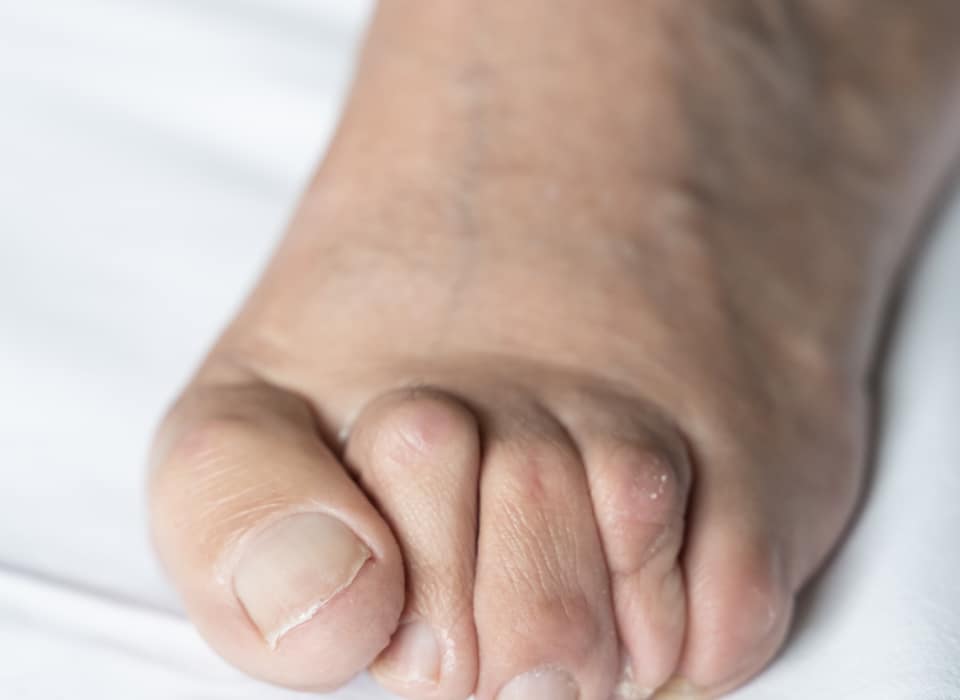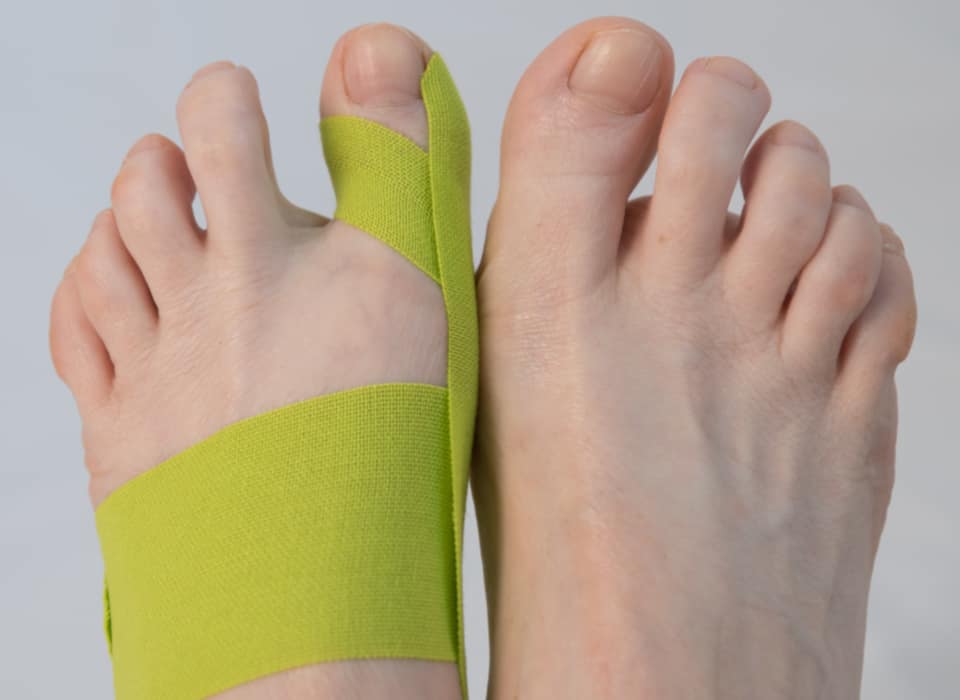Foot deformities Perth
What are foot deformities?
Given your foot is a complex structure made up of 26 bones, 33 joints, and more than 100 tendons, muscles, and ligaments, it is no wonder there is a lot of diversity in the shape of our feet. Some of this difference in structure can become deformities. Many will not require any treatment but when they start to become painful or make it difficult to wear shoes they need to be treated.
Much like a finely-tuned orchestra requires each instrument to play in harmony, so too does our foot require all of these bones, joints, tendons, muscles and ligaments to function seamlessly. A slight deviation or strain can disrupt this harmony, leading to foot deformities.

Given this complexity, it’s easy to see how foot issues can pop up, not just from outside injuries but also from tiny imbalances inside this detailed structure.
Types of foot deformities
What are the different types of foot deformities?
At The Foot & Ankle Centre in Perth we regularly treat the common foot deformities: bunions, flat feet, dorsal bosses, claw toes, hammertoes, and mallet toes.
Bunions and flat feet deal predominantly with the structure and alignment of the larger parts of our feet.
- Bunions: A bunion is a bony bump that forms on the joint at the base of your big toe. It happens when the big toe pushes against the next toe, forcing the joint to get bigger and stick out.
Are there different types of bunions?
Certainly. Here’s an overview.
Hallux valgus:
- This is the most common type of bunion.
- The big toe leans towards the smaller toes, and a painful lump can form on the inside base of the big toe.
Hallux rigidus:
- Arthritis of the big toe joint.
- Unlike typical bunions, the main issue here is stiffness and limited movement of the big toe.
- Pain, especially when pushing off to walk, and a bump on top of the toe joint are typical signs.
Tailor’s bunion (or Bunionette):
- Located on the outside of the foot at the base of the little toe.
- Similar to a regular bunion but located near the little toe.
- Named this way because tailors used to sit with their legs crossed, putting pressure on this part of the foot.
- Flat feet: Flat feet occur when the arches on the inside of your feet are flattened, allowing the entire sole to touch the floor when you stand up. This is often congenital, ie you are born with ligament laxity and your foot is naturally flat or it can be from trauma, bones or tendon issues.
- Dorsal boss: This is a lump that forms on the top of the foot from a bone spur that can rub and cause pain with shoe wear.
Claw toes, hammertoes and mallet toes are all toes that are bent into odd positions. They typically affect the smaller toes. Some people find them unsightly and as they get more deformed they start causing painful calluses.
Most people have 3 joints in each of their smaller toes—one at the base, another in the middle, and a final one near the tip.
- Claw toes: When you have claw toes, typically multiple joints are affected. There is a downward bending in the middle joint and an upward bending at the base. In some cases, the tip may also bend downward.
- Hammertoes: When you have hammertoes, the middle joint is affected, bending downwards. The other joints may remain relatively unaffected.
- Mallet toe: In mallet toes, the tip joint is bent. The middle joint and the base joint are typically not affected in mallet toes.
Symptoms of these five foot deformities vary, but typically they include pain, discomfort when wearing shoes, changes in foot shape and difficulty walking.
Treatment for foot deformities Perth
How are foot deformities treated?
First-line treatments are non-surgical and may include:
Orthotic devices: Custom orthopaedic devices that fit inside shoes can correct the shape of the foot. Podiatrists help to fit these.
Padding and taping: Padding can alleviate pain and taping can help realign the foot.
Shoewear: Changing to more accommodating shoewear can also help
Medications: Anti-inflammatory drugs or corticosteroid injections might be prescribed.
Physiotherapy: Exercises to strengthen the muscles.
Surgery for foot deformities Perth
Types of foot deformity surgeries
When non-surgical treatments don’t provide relief or when the deformity has progressed significantly, surgery becomes an option. The goal is to improve the appearance of the foot, but more importantly, to restore function, relieve pain, and prevent further complications.
There are 4 types of surgeries for foot deformities.
Ostectomy
This is the simplest surgery involving removal of the bony lump.
Osteotomy
A surgical procedure involving cutting and realigning the bone. By changing the structure of the bones it can help alleviate pain and restore more natural foot alignment. We often perform this procedure for bunions and hammertoes.
Arthrodesis
Arthrodesis, also known as bone fusion, joins bones together, eliminating pain and providing stability. We often perform this type of surgery to treat arthritic joints or severe deformities. After this procedure, the joint will no longer bend.
Tendon transfer
During a tendon transfer, we will ‘relocate’ tendons from one side of the toe and foot to the other. It’s done to correct imbalances caused by muscle or tendon weaknesses. By transferring the tendon, the toe and foot can be pulled into a straight position.
Reconstruction of the posterior tibial tendon
If your flat feet are caused by dysfunction or damage to the posterior tibial tendon (or the inner ankle tendon), we might opt to repair or reconstruct this tendon. The posterior tibial tendon plays a key role in supporting the arch of the foot. If the tendon is irreparable then a fusion procedure (arthrodesis) is done of the hindfoot.
Each procedure’s recovery time will vary, but typically you will need to wear special shoes or braces post-surgery and may need physiotherapy.
Foot specialist Perth
Why The Foot & Ankle Centre?
With over 25 years of specialised expertise in foot and ankle surgeries, The Foot & Ankle Centre is your trusted clinic for foot deformity surgery.
You are welcome to make an appointment at The Foot & Ankle Centre. We try to see patients as quickly as possible.



